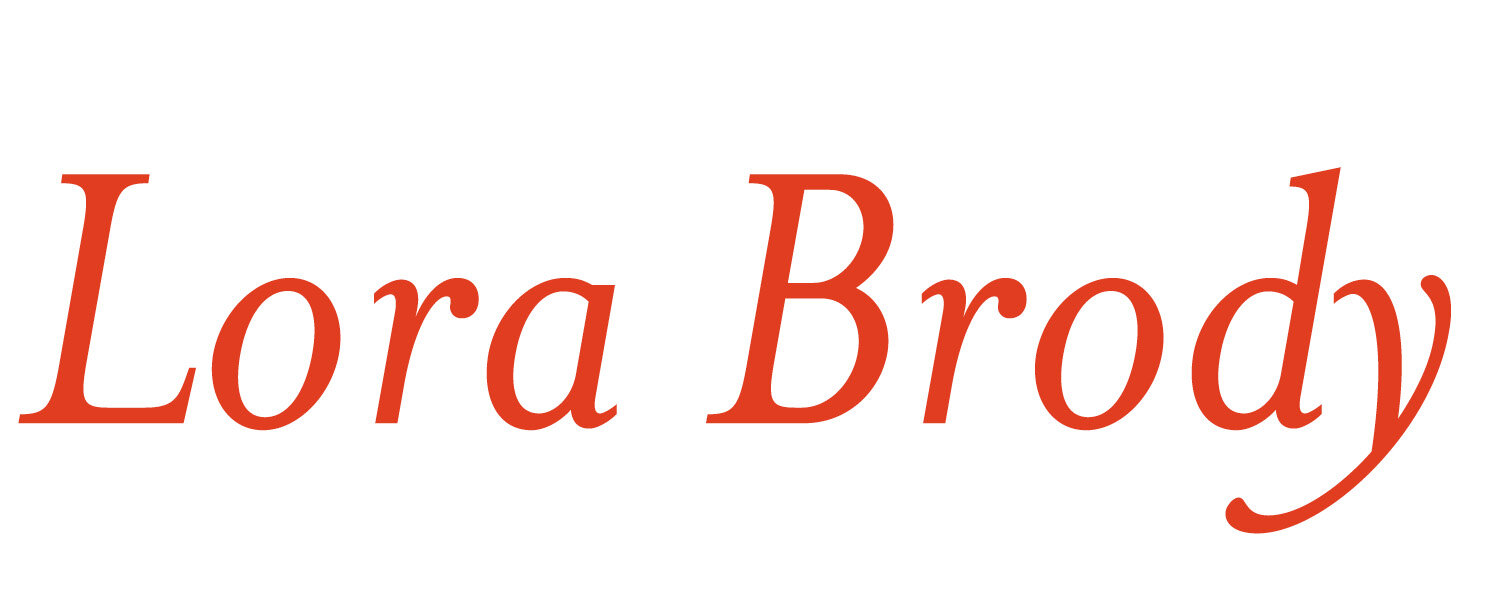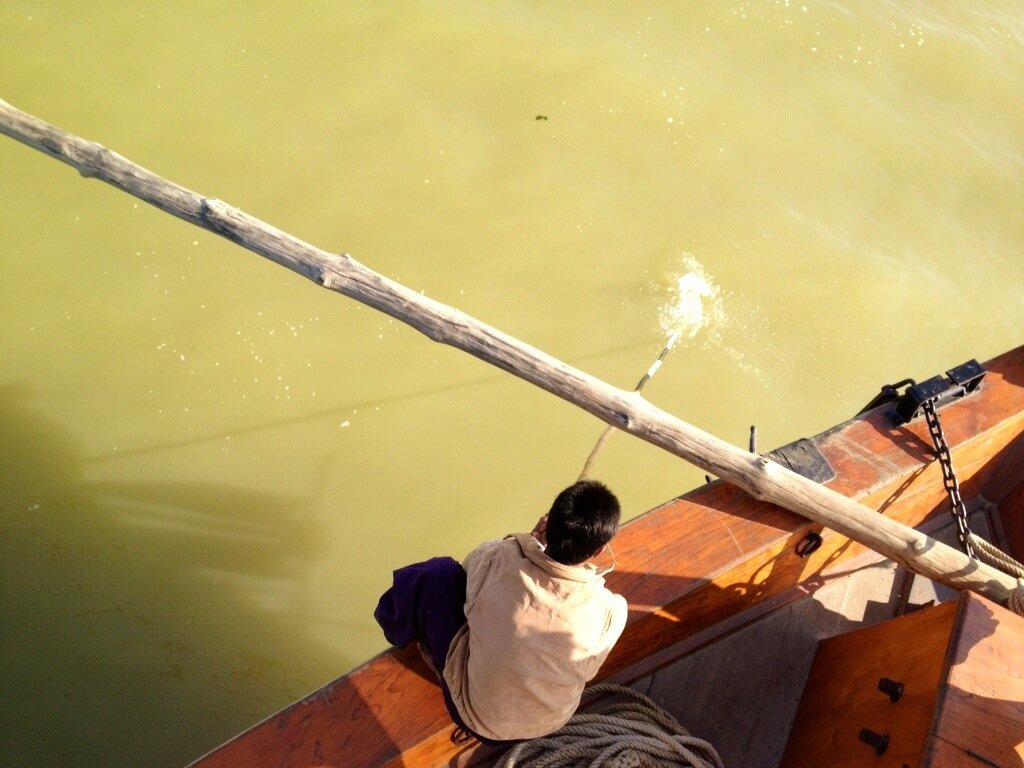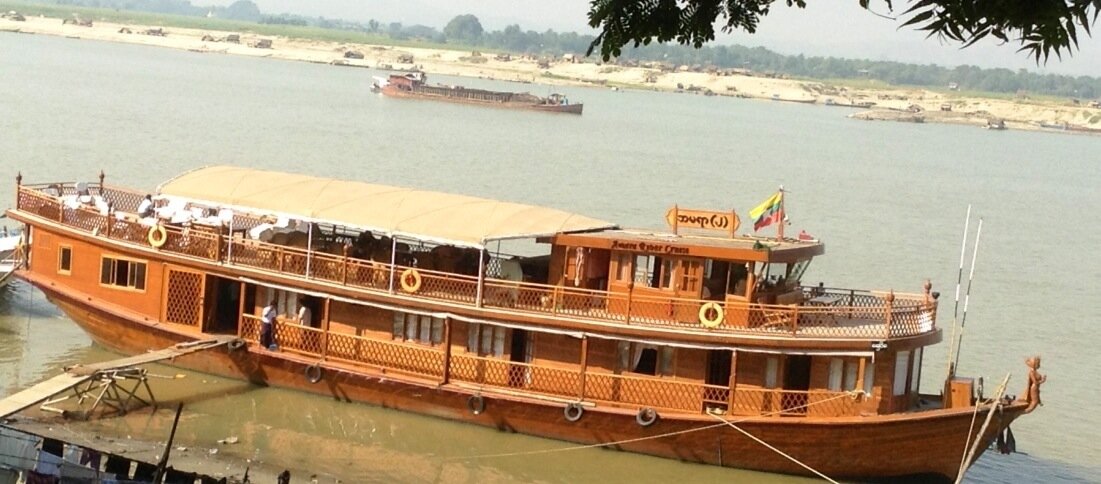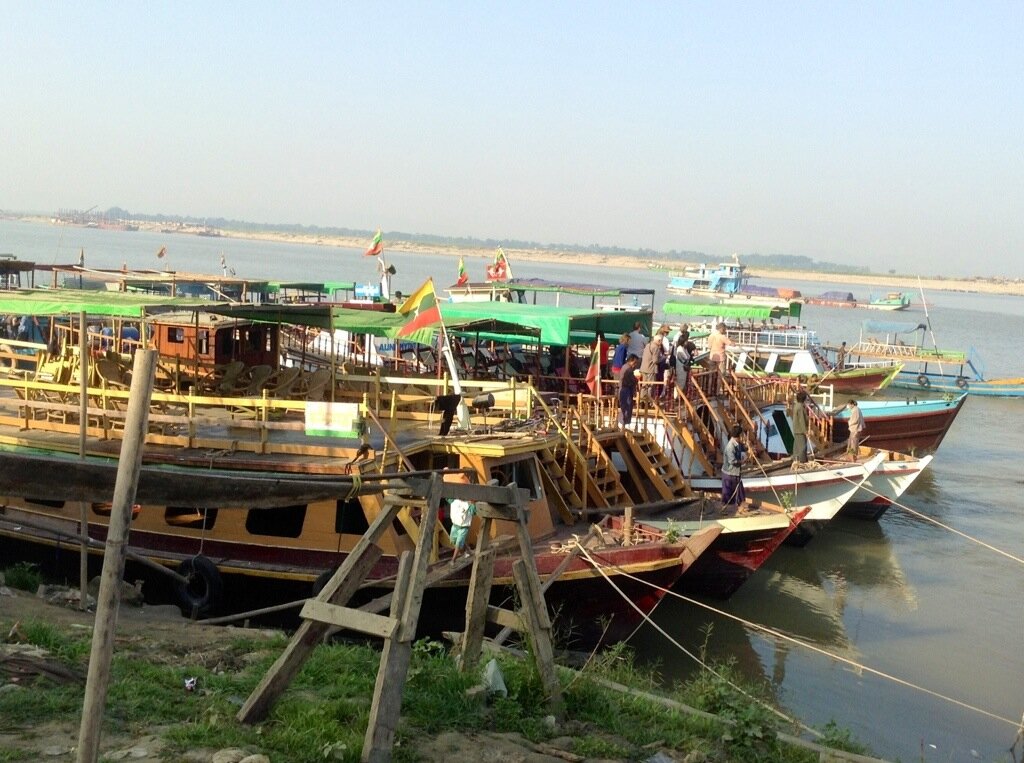Amara 2 -- a few more photos
Greetings to all and thank you for the nice feedback and news from home.I found a few more photos I'd like to share from our time on the river. When we reserved a cabin on this boat we couldn't find any reviews or much information about it and/or the company that ran it. It was half the price of our Mekong trip on the Pandaw a few years ago, which sort of raised a red flag. The lack of any feedback anywhere on the web was also a bit of a concern. At one point I found a website that actually compared the specifications and safety equipment of the Pandow boat and the Amara, and worried that the Pandow had depth finders and whatnot that the Amara didn't have.At the very last minute just before we left, I received a response to a query I had placed on TripAdvisor months before. An Australian woman had just taken the same cruise we were booked on and said she'd had a wonderful time. So I relaxed, but still had that depth finder thing on my mind.Consider me your new authority on the correct (actually the only) way to take depth readings on the ever-changing Irrawaddy River. Forget fancy sonar, digital readings and whatnots. The poles are the way to go - Mark Twain style. This is the only way to navigate in the often shallow areas of the river where shifting sands and strong currents (plus monsoon rains) make charting the river impossible. Two (sometimes three) men sit in the prow of the ship just above the water line. One holds a long bamboo pole with black and white markings on it. The other has a walkie-talkie with a direct line to the captain (who is in the wheelhouse directly above). The pole man thrusts the end of his pole into the water just ahead of the boat (which is moving at a snail's pace), measuring the depth according to the lines on the pole. Then he calls to his mate who, in turn, reports the findings to the captain via the walkie-talkie and hand signals. When the water becomes critically shallow the crew goes out in a skiff out ahead of the boat, using the poles and hand signals to guide the captain to the appropriate channel. Quite often we had to snake back and forth across the width of the river looking for a channel. Occasionally I felt like Rosie on the African Queen. Only with much better food and no leeches. The river is populated by boats that have run aground on sand banks and are waiting to be hauled off.One more thing: we had two sightings of the rare Irrawaddy dolphins which look like baby beluga whales. Unfortunately, they were too far away to photograph.The bottom photo shows our disembarkation in Mandalay. Ours was the boat farthest out in the river so we had to walk the planks (literally) arranged between the adjacent boats to get to shore. Lots of helping hands and greetings of hello from each boat owner as we passed through his vessel.



